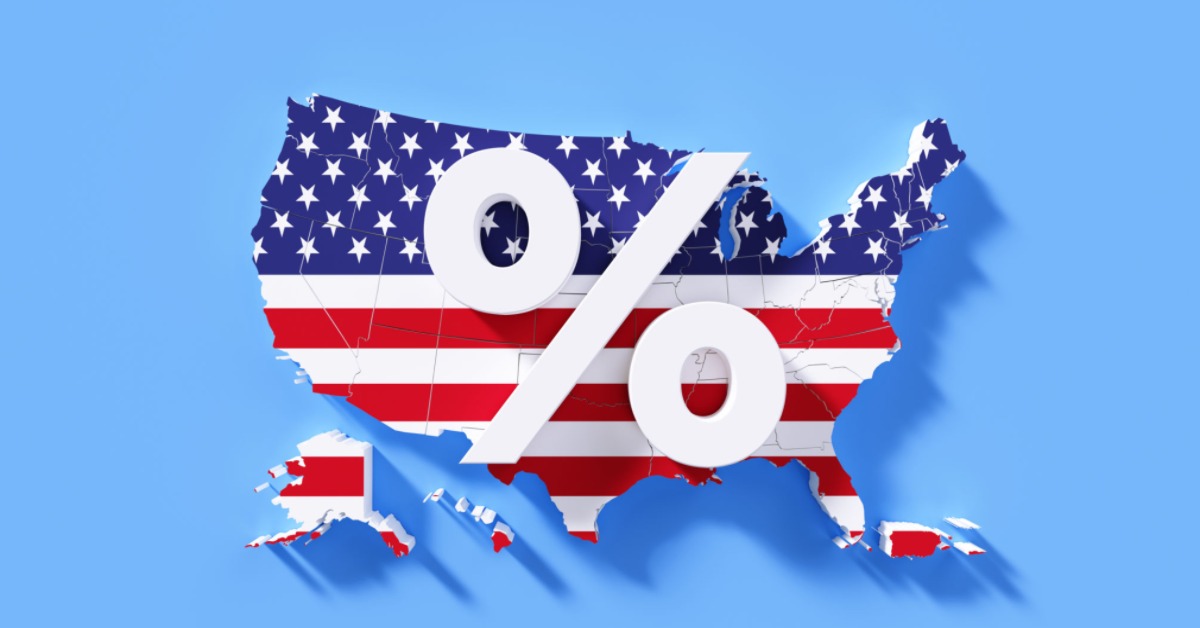Looking to buy a home today? You’re probably wondering where to snag the best deal on a mortgage. As of July 8, 2025, the states boasting the cheapest 30-year new purchase mortgage rates are New York, California, Connecticut, Florida, Colorado, New Jersey, Tennessee, Texas, and Washington. These states are seeing rate averages between 6.69% and 6.81%.
Now, let's dive deeper into what this means for you as a potential homeowner. It's not as simple as just packing your bags and moving to one of these states, but understanding these trends can give you a significant advantage.
Mortgage Rates Today: The States Offering Lowest Rates – July 8, 2025
The Tale of Two Coasts: Rates Coast to Coast
While some states enjoy rates below 7%, others are facing higher costs. According to Investopedia's report and Zillow's data, if you're looking at properties in Alaska, West Virginia, Wyoming, Montana, New Mexico, North Dakota, Rhode Island, or South Dakota, know that you might encounter higher rates. Averages in these states are reported between 6.91% and 6.97%.
Why Do Mortgage Rates Vary So Much by State?
This is the million-dollar question, isn't it? Several factors conspire to create this disparity:
- Different Lenders, Different Strategies: Not every mortgage lender operates in every state. Those that do often have different risk appetites and business strategies. For example, a smaller, regional bank might be more aggressive with its rates to gain market share in its local area compared to a national giant.
- State-Level Regulations: Each state has its own set of rules governing the mortgage industry. These regulations can impact the cost of doing business for lenders and, in turn, influence the rates they offer.
- Credit Score Averages: States with higher average credit scores may see slightly lower rates overall. Lenders view borrowers in these areas as less risky.
- Average Loan Size: This is a big one. States with higher home prices often have larger average loan sizes. Lenders may adjust their rates based on the size of the loans they’re processing. A larger loan could mean a slightly better rate due to economy of scale for the lender.
As someone who has followed the housing market for years, I’ve seen firsthand how these factors shift and change over time, leading to fluctuating rate differences between states.
National Overview: Where Do We Stand?
Alright, enough with the state-by-state breakdown. What's happening on the national level? As of today, July 8, 2025, the national average for a 30-year fixed-rate mortgage is around 6.83%. While this is a slight increase from two weeks ago – rates dropped 16 basis points – it’s still better than the one-year high of 7.15% we saw in mid-May.
Here's a quick snapshot of national averages across different loan types:
| Loan Type | New Purchase |
|---|---|
| 30-Year Fixed | 6.83% |
| FHA 30-Year Fixed | 7.55% |
| 15-Year Fixed | 5.86% |
| Jumbo 30-Year Fixed | 6.84% |
| 5/6 ARM | 7.43% |
So, are we back to the rock-bottom rates of the past? Not quite. In March, rates briefly touched 6.50%, and in September of last year, we saw a two-year low of 5.89%. But compared to the peaks of last year, things are certainly looking a little more manageable.
Don't Fall for the “Teaser” Trap
You know those enticing mortgage rates you see plastered all over the internet? Be very careful. Lenders often advertise “teaser rates” that are only available to a select few with near-perfect credit, a hefty down payment, and maybe even a willingness to pay points upfront.
It's like dangling a carrot only to snatch it away when you get close. The rates published won't compare directly with teaser rates you see advertised online since those rates are cherry-picked as the most attractive vs. the averages you see here. Teaser rates may involve paying points in advance or may be based on a hypothetical borrower with an ultra-high credit score or for a smaller-than-typical loan. The rate you ultimately secure will be based on factors like your credit score, income, and more, so it can vary from the averages.
Factors Influencing Mortgage Rate Movements: A Deeper Dive
Understanding the drivers behind mortgage rates is crucial for anticipating future trends. Here's a breakdown of the key factors at play:
- The Bond Market: 10-year Treasury yields are like the heartbeat of the mortgage market. When Treasury yields go up, mortgage rates typically follow suit.
- The Federal Reserve: The Fed's monetary policy has a major impact. Specifically, things like bond buying or the fed funds rate influence mortgage rates. The Fed held rates steady but announced rate cuts of 0.50 and then 0.25 points in September, November and December.
- Competition: Intense competition among lenders can drive rates down as they fight for your business. Similarly, the availability, and the cost of buying mortgage backed securities also exerts stress on the lenders.
- Inflation: High inflation makes borrowing more expensive because it reduces the purchasing power of money. That is why the Federal Reserve will keep a hawk eye on inflation and tweak its policies accordingly.
Remember when the Fed aggressively raised the federal funds rate to combat inflation in 2022 and 2023? It was one of the fastest and most substantial rate-hike cycles in recent history, and it sent mortgage rates soaring. The central bank has opted to hold rates steady, and it’s possible the central bank may not make another rate cut for months.
What's Next? Looking Ahead
Predicting the future of mortgage rates is a fool's errand. There are just too many moving parts and unexpected events that can throw things off course. The Fed is scheduled to have eight rate-setting meetings per year, that means we could see multiple rate-hold announcements in 2025.
However, here's what I'm keeping an eye on:
- Inflation Data: Any signs that inflation is stubbornly high could prompt the Fed to hold rates steady or even consider further hikes.
- Economic Growth: A strong economy might suggest that the Fed can afford to be more aggressive with its monetary policy.
- Geopolitical Events: Unexpected global events can create volatility in the financial markets and impact mortgage rates.
Read More:
States With the Lowest Mortgage Rates on July 3, 2025
Are Mortgage Rates Expected to Go Down Soon: A Realistic Outlook
My Advice: Shop Around and Stay Informed
No matter what the prevailing interest rates are, the best thing you can do is shop around and compare offers from multiple lenders. Don't be afraid to negotiate and ask questions. A lower rate can save you thousands of dollars over the life of your loan.
Don’t just settle for the first offer you receive. Talk to different lenders, credit unions, and mortgage brokers. You might be surprised at the range of rates and terms available.
- Check at least 3 to 5 lenders: Don’t leave money on the table. Compare as many rates as possible.
- Negotiate: Don’t be afraid to negotiate based on offers you receive from other lenders.
- Understand the fees: There are often fees attached to a mortgage, such as origination fees, appraisal fees, and closing costs. Be sure you understand all of the costs involved.
Calculating Your Potential Monthly Payment
Want to get a sense of what your monthly mortgage payment might look like? Try this:
Let's say you're buying a house for $440,000 and putting down $88,000 (20%). You secure a 30-year mortgage at 6.67%. Here's a breakdown:
- Principal & Interest: $2,264.38
- Property Taxes: $256.67
- Homeowners Insurance: $128.00
- Total Estimated Monthly Payment: $2,649.04
Keep in mind that this is just an estimate. Your actual payment may vary depending on your specific circumstances.
In conclusion, navigating the current mortgage rate environment requires a combination of awareness, research, and strategic decision-making. By staying informed, shopping around, and understanding the factors that influence rates, you can position yourself to secure the best possible deal on your new home. Happy house hunting!
Invest in Real Estate in the Top U.S. Markets
Investing in turnkey real estate can help you secure consistent returns with fluctuating mortgage rates.
Expand your portfolio confidently, even in a shifting interest rate environment.
Speak with our expert investment counselors (No Obligation):
(800) 611-3060
Also Read:
- Will Mortgage Rates Go Down in 2025: Morgan Stanley's Forecast
- Expect High Mortgage Rates Until 2026: Fannie Mae's 2-Year Forecast
- Mortgage Rate Predictions 2025 from 4 Leading Housing Experts
- Mortgage Rates Forecast for the Next 3 Years: 2025 to 2027
- 30-Year Mortgage Rate Forecast for the Next 5 Years
- 15-Year Mortgage Rate Forecast for the Next 5 Years
- Why Are Mortgage Rates Going Up in 2025: Will Rates Drop?
- Why Are Mortgage Rates So High and Predictions for 2025
- Will Mortgage Rates Ever Be 3% Again in the Future?
- Mortgage Rates Predictions for Next 2 Years
- Mortgage Rate Predictions for Next 5 Years
- Mortgage Rate Predictions: Why 2% and 3% Rates are Out of Reach
- How Lower Mortgage Rates Can Save You Thousands?
- How to Get a Low Mortgage Interest Rate?
- Will Mortgage Rates Ever Be 4% Again?



